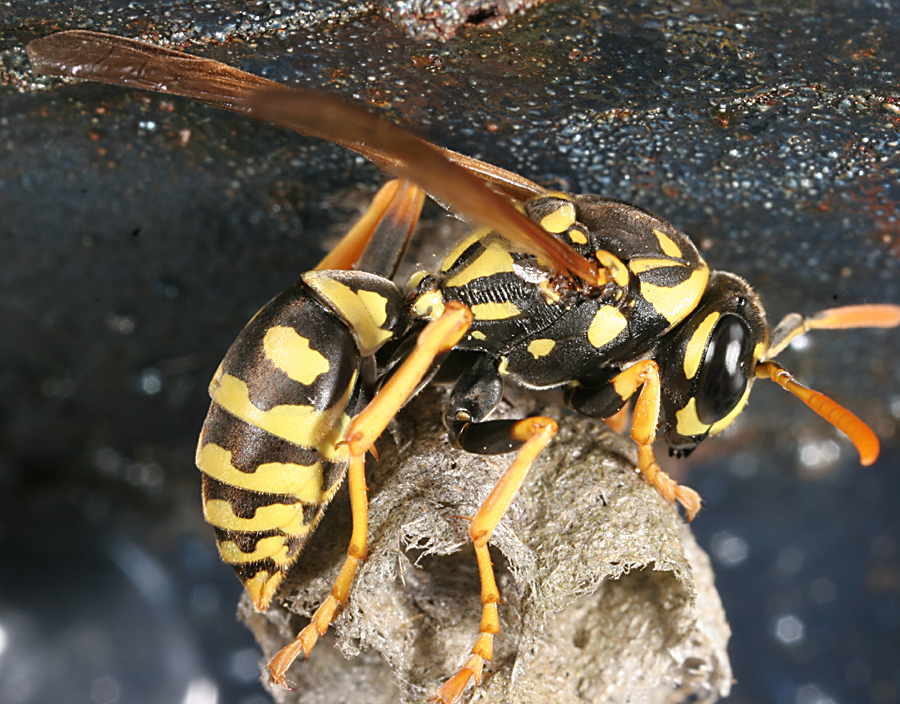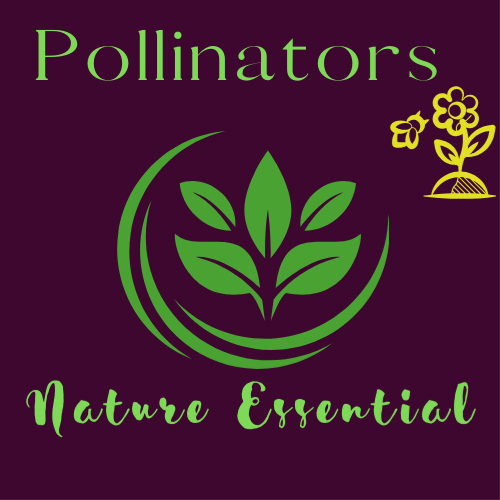
Polistes (Paper Wasps)
Polistes is a genus of wasps in the family Vespidae, commonly known as paper wasps due to the papery material they use to construct their nests. These wasps are widely distributed across the globe, with species found in temperate and tropical regions of North America, South America, Europe, Asia, and Australia. Polistes species are social insects, and unlike the highly organized colonies of honey bees and some other wasps, paper wasp colonies are more loosely structured.
Physical Characteristics
Polistes wasps are typically medium-sized wasps, with a slender body and distinctive elongated antennae. They have a narrow waist, and their coloration varies widely, but they often feature a combination of yellow, orange, or reddish markings on a black or dark brown body. The wings are translucent and have a delicate structure, giving them a fragile appearance. Males and females can be easily distinguished, with males often being smaller than the females and lacking a stinger.
Nesting and Colony Structure
Paper wasps are well known for their distinctive nests, which are usually made from a mixture of chewed wood fibers and saliva, giving the nest a papery texture. These nests are typically built in sheltered locations such as under the eaves of buildings, tree branches, or in sheds. The nest itself consists of a series of hexagonal cells, which are used to house the larvae. The nests can vary in size from a few cells to larger structures that can contain hundreds of cells in multiple tiers.
The colony starts with a single fertilized queen, who emerges in spring after hibernation. She is responsible for laying eggs in the early stages of the colony’s life. Once the first generation of workers (sterile females) emerges, they take over the task of foraging for food and caring for the queen’s future offspring. The queen’s role then shifts primarily to reproduction. As the season progresses, the colony may produce new queens and males for mating. By the end of the summer, the colony typically dies, leaving behind the fertilized queens to hibernate until the following spring.
Behavior and Social Structure
The social structure of Polistes colonies is more relaxed than that of honey bee or yellowjacket colonies. While there is a queen and workers, the workers are not as highly specialized as in some other species. In Polistes colonies, workers sometimes engage in reproductive activities, which can lead to conflicts over the queen’s dominance. This flexibility in social structure allows the colony to adapt quickly to changes in the environment and resources.
Males emerge towards the end of the colony’s life cycle. Their primary role is mating with the new queens produced by the colony. These males do not participate in foraging or nest maintenance.
Ecological Role and Pollination
Despite their reputation as pests, Polistes wasps play a beneficial role in the ecosystem. They are important predators of a variety of insects, including many pest species. As they forage for food, paper wasps help to control populations of caterpillars, aphids, and other insects that could potentially harm plants.
Some species of Polistes are also occasional pollinators, as they visit flowers for nectar. While they are not as effective as bees in pollination, their visits still contribute to the process, particularly in the early spring and late fall when other pollinators are less active.
Stinging Behavior and Safety
While Polistes wasps are capable of stinging in defense of their nest, they are generally not aggressive unless they feel threatened. Their sting is painful but typically not life-threatening to humans, though individuals who are allergic to wasp venom may experience more severe reactions. Unlike honey bees, Polistes wasps can sting multiple times without dying, as their stingers are not barbed.
It is always a good idea to avoid disturbing a Polistes nest, as they can become territorial and protective of their colony. However, they are often less aggressive than yellowjackets or hornets and will typically only sting in self-defense.
Life Cycle
The life cycle of a Polistes colony begins in the spring when a fertilized queen emerges from hibernation. She begins to build a small nest and lays eggs that hatch into workers. These workers care for the nest and the queen’s new eggs throughout the summer. By late summer, new queens and males are produced. These individuals mate, and the fertilized queens find places to hibernate until the next spring. The rest of the colony dies off, and the cycle begins anew.
Challenges and Conservation
While Polistes wasps can be a nuisance when they nest close to human activity, they are generally not considered a major pest. In fact, some species of paper wasps are declining in certain areas due to habitat loss and pesticide use. Preserving natural habitats and reducing pesticide use could help support the populations of these important insects.
In some regions, Polistes wasps have been identified as an integral part of the local biodiversity, contributing to pest control and even acting as indicators of environmental health. Efforts to protect these wasps focus on preserving their nesting habitats and minimizing human interference.
Conclusion
Polistes wasps, often seen as troublesome due to their stinging potential, are in fact fascinating and beneficial insects. Their role as natural pest controllers, pollinators, and ecological contributors highlights their importance in the ecosystem. By understanding their behavior, social structure, and ecological role, we can better appreciate these unique insects and manage them safely when they interact with human environments.
